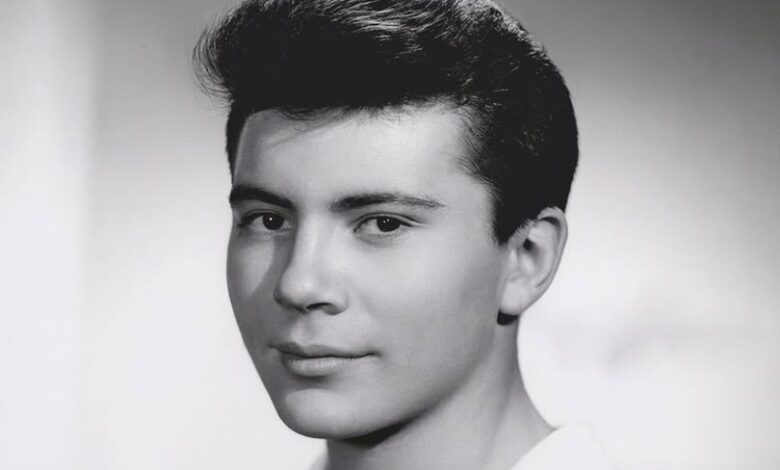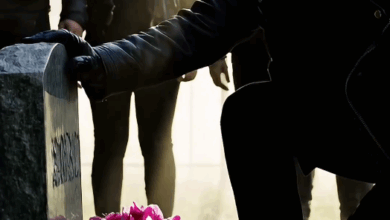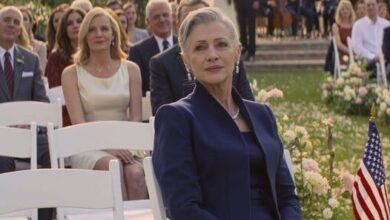
At Almost 103, He is the Oldest Living Star!
In a world obsessed with the new, the fast, the trending, there’s something timeless about the men and women who shaped the entertainment industry long before social media, streaming platforms, or modern celebrity culture existed. As 2025 rolls on, some of the oldest living stars in Hollywood and beyond remain powerful reminders of where modern entertainment came from — and how much of it was built on their shoulders. Nearing 103, standing at the edge of an entire century of cultural change, these icons continue to pull audiences in with the same gravity they carried decades ago.
One of the most remarkable names on that list is Ray Anthony, now 103 years old. A legendary bandleader and the last surviving member of the original Glenn Miller Orchestra, he embodies a piece of American music history that most people today only know through films or dusty vinyl collections. His career stretches back to the golden age of big band music — the era of elegant dance halls, grand orchestras, and the unmistakable sound of swing that defined a generation. Anthony didn’t just live through that time; he helped build it. And even now, well past the age when most people slow down, he remains a symbol of that music’s staying power.
Then there’s June Lockhart, whose presence on television shaped childhoods across multiple generations. From Lassie to Lost in Space, she brought a mix of warmth and authority that made her one of the most recognizable faces in classic TV. Her performances became comfort viewing long before the term existed. Lockhart’s legacy is more than nostalgia — it’s proof of how certain characters stay lodged in people’s hearts forever.
Eva Marie Saint is another powerhouse of longevity and grace. An Oscar-winning actress who stood alongside giants like Marlon Brando and Cary Grant, she was part of Hollywood’s most defining moments — including On the Waterfront and Hitchcock’s North by Northwest. Her career is a masterclass in subtlety, emotional intelligence, and quiet control. At an age when most would retreat from public life, she continues to inspire young performers who study her work the way musicians study sheet music.
And of course, there is Dick Van Dyke — still performing, still dancing, still charming audiences with the same spark he had in Mary Poppins and The Dick Van Dyke Show. Few entertainers have bridged generations the way he has. His energy defies age in a way that borders on surreal, and his ability to make people laugh without trying is a talent that modern comedy rarely replicates.
These are just some of the names who continue to carry the torch of old Hollywood. There’s Elizabeth Waldo, born in 1918, whose life’s work preserves the sounds of indigenous cultures and weaves them into unique musical compositions. She is more than a musician — she’s a historian, an archivist, and a storyteller whose influence reaches far beyond any single genre. Karen Marsh Doll, often overlooked but deeply respected in film circles, worked on sets that generations now consider sacred — titles like The Wizard of Oz and Gone with the Wind. Her memories form part of Hollywood’s earliest living record.
Then there are the legends who remain active, productive, and relentlessly creative even in their 90s. Mel Brooks, the comedic mastermind behind classics like Blazing Saddles and Young Frankenstein, is still writing, still joking, still shaping comedy decades after he first broke every rule and every boundary the industry tried to put in front of him. His influence is found in every modern parody, every sharp-witted comedy, every irreverent line that audiences now take for granted.
William Shatner continues to defy expectations in his own way. More than Captain Kirk, more than a pop-cultural icon, he’s a performer who refuses to slow down — even going to space at an age when most people have trouble climbing stairs. Barbara Eden, forever linked to her role in I Dream of Jeannie, still appears at fan events and interviews with the same grace and sparkle that made her a star.
Few actors embody longevity like Clint Eastwood. In his 90s, he continued directing feature films — not small indie pieces, but major studio productions with the intensity and confidence of a man half his age. His storytelling remains sharp, stripped down to essentials, and unmistakably his own. Sophia Loren carries the same magnetism she had in her youth, still representing an era of global cinema no one has ever replicated. Michael Caine, with his unmistakable voice and gravitas, remains a towering presence in film even as he steps back from acting.
Julie Andrews, despite losing the singing voice that made her legendary, still holds an unmatched place in cinematic history. She continues shaping new generations through narration, writing, and appearances that remind people of the dignity and heart she brought to every role. Shirley MacLaine remains as bold and outspoken as ever, a blend of spiritual curiosity and fierce independence. Al Pacino and Jane Fonda — two icons from the explosive, rebellious era of 1970s film — continue to act, speak, push boundaries, and use their platforms to advocate for causes they believe in.
These men and women didn’t simply participate in culture — they shaped it. They carried entire industries during their prime, and they continue to influence artists who weren’t even born when they delivered their most famous performances. Their longevity isn’t just about survival; it’s about relevance. They’ve adapted, evolved, and stayed connected to audiences across eras defined by wildly different tastes, technologies, and expectations.
What makes their presence in 2025 so striking is that they form a living link between the past and the present — a reminder of where entertainment came from and why it still matters. They performed before digital editing, before CGI, before social media turned actors into brands. Their careers were built on raw talent, persistence, and a kind of endurance that feels almost unreal now.
As the years pass, their numbers shrink, and each birthday they reach becomes a milestone not just for them, but for the history of film and music. They are the last witnesses to eras that shaped the world. They are proof that brilliance doesn’t fade with age — and that true artistry leaves a mark no amount of time can erase.




